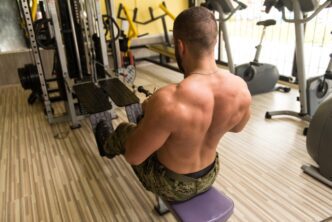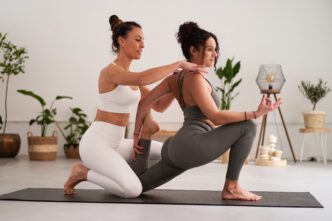A Quick Takeaway
The Story Behind the Trend
How to Make It Work for You
The Community View
For those seeking to enhance their physique and fitness beyond the typical gym routine, running in Miami offers a dynamic and often underestimated pathway to a stronger core. This vibrant city, with its diverse terrains and unique climate, provides an unparalleled environment where every stride can contribute significantly to abdominal strength and stability, benefiting anyone from casual joggers to seasoned marathoners looking for a sustainable, full-body workout that extends far beyond the visual appeal of a beach-ready physique.
The Unsung Hero: Why Running Engages Your Core
While often perceived as primarily a leg workout, running is, in fact, a full-body exercise that heavily relies on core strength for efficiency, posture, and injury prevention. Your core acts as the central pillar, connecting your upper and lower body and ensuring smooth, powerful movement with every step.
Beyond the Six-Pack: Understanding Your Core
The core is much more than just the visible “six-pack” muscles; it’s a complex network of muscles that wraps around your entire midsection. Key players include the transverse abdominis, a deep muscle acting like a natural corset; the obliques, responsible for rotation and side bending; the rectus abdominis, the superficial “six-pack” muscle; and the erector spinae, which supports your spine. These, along with the pelvic floor and diaphragm, work synergistically to provide stability.
During running, these muscles stabilize your pelvis and spine, preventing excessive rotation and side-to-side movement. A strong core ensures that the power generated by your legs is efficiently transferred, allowing for a more economical stride and reducing the likelihood of compensatory movements that can lead to injury.
The Kinetic Chain and Core Stability
Running involves a continuous chain of movements, and the core is the critical link in this kinetic chain. It acts as a force transfer center, taking energy from your legs and transmitting it to your upper body, and vice versa. Without adequate core stability, this transfer becomes inefficient, leading to wasted energy and increased strain on other joints.
A stable core prevents unwanted motion, such as excessive hip drop or torso rotation, which can compromise running form. By maintaining a neutral spine and pelvis, your core allows your limbs to move freely and powerfully, making your running more effective and less taxing on your body.
Miami’s Unique Terrain: A Core-Sculpting Playground
Miami’s diverse landscape offers an exceptional environment to challenge and strengthen your core muscles in ways that a treadmill or flat track simply cannot. Each unique surface and environmental factor introduces novel demands on your stabilizers.
Soft Sands and Stability Challenges
Running on the soft, shifting sands of South Beach, Key Biscayne, or Crandon Park significantly intensifies core engagement. The unstable surface forces your smaller, stabilizing muscles, particularly the deep core and hip stabilizers, to work harder to maintain balance and propulsion. Every step requires more effort to push off and land without sinking, activating your transverse abdominis and obliques to a far greater degree than running on firm ground.
This constant micro-adjustment to an uneven, yielding surface strengthens the entire core musculature, improving proprioception and functional stability. It’s a natural, low-impact way to build resilience and power from your center, making beach runs a prime choice for core development.
Coastal Breezes and Dynamic Balance
Miami’s often breezy coastal environment, especially along causeways like the Venetian Causeway or the Rickenbacker Causeway, adds another layer of core challenge. Running against or with a strong wind forces your core muscles to work overtime to maintain an upright posture and prevent lateral sway. This dynamic balance requirement engages your obliques and deeper spinal stabilizers as you resist external forces.
The constant, subtle adjustments your core makes to counteract the wind’s push and pull contribute to significant improvements in stability and muscular endurance. It transforms a seemingly simple run into a sophisticated core workout, enhancing your body’s ability to react and stabilize under varying conditions.
Urban Landscapes and Varied Surfaces
Beyond the sand and wind, Miami’s urban running paths offer a blend of surfaces that keep your core guessing. From the paved pathways of Bayfront Park to the wooden boardwalks of South Beach and the concrete bridges, each surface presents a different impact and stability demand. Navigating slight inclines on bridges or uneven sidewalk sections requires continuous core engagement to maintain balance and absorb impact.
The varied terrain ensures that your core is constantly adapting, recruiting different muscle fibers to stabilize and support your body. This unpredictability is key to developing a truly functional and resilient core, preparing it for a wide range of movements and preventing monotony in your training.
Optimizing Your Miami Run for Core Strength
To truly harness Miami’s potential for core sculpting, it’s essential to run with intention and integrate specific techniques. Mindful running can transform a casual jog into a targeted core workout.
Form Focus: Engaging Your Core Actively
Start by focusing on your posture: stand tall, imagine a string pulling you upwards from the crown of your head. Engage your core by gently drawing your navel towards your spine, not sucking in, but bracing as if preparing for a light punch. This activates your transverse abdominis, providing a stable base for your limbs.
Maintain a slight forward lean from your ankles, not your waist, and keep your shoulders relaxed and back. Avoid excessive arm swing across your body, as this indicates a lack of core stability and can lead to wasted energy. Consciously engaging your core throughout your run will make a significant difference.
Intervals and Inclines: Upping the Ante
Incorporating interval training and incline work into your Miami runs can dramatically increase core activation. Speed intervals, such as short bursts of fast running followed by recovery, require your core to work harder to stabilize against the increased forces and faster leg turnover. This recruits more muscle fibers and builds power.
Running up bridges, such as the bridges along the Rickenbacker Causeway or the Venetian Causeway, also provides excellent core work. The incline forces your body to lean forward and your core to brace more intensely to drive your legs upwards, strengthening your lower back and deep abdominal muscles.
Post-Run Core Activation: Solidifying Gains
While running builds core strength, a short, focused core routine immediately after your run can solidify these gains. Exercises like planks, side planks, bird-dog, and dead bugs specifically target the deep stabilizing muscles. Aim for 5-10 minutes of dedicated core work 2-3 times a week.
These exercises help to reinforce the neural pathways for core engagement, ensuring that your core muscles are strong and responsive both during your runs and in daily life. This synergistic approach maximizes your efforts and prevents imbalances.
Beyond the Run: A Holistic Approach to Core Health
A truly strong and functional core is built not just through running but through a comprehensive approach that includes targeted strength training, proper nutrition, and mindful practices.
Strength Training for a Resilient Core
Complement your running with dedicated strength training focusing on all aspects of the core. Exercises such as planks (front and side), Russian twists, bicycle crunches, leg raises, and anti-rotation movements like pallof presses are crucial. These movements strengthen the core in different planes, preparing it for the dynamic demands of running.
Don’t forget the posterior chain; deadlifts, glute bridges, and superman exercises strengthen the back muscles that are integral to core stability. A balanced strength program ensures that your core is robust and capable of supporting your running endeavors without overreliance on any single muscle group.
Nutrition and Hydration: Fueling Core Performance
A strong core, like any muscle group, requires proper fuel and hydration to perform optimally and recover effectively. Adequate protein intake is essential for muscle repair and growth, while complex carbohydrates provide the energy needed for sustained effort. Healthy fats support overall body function and hormone balance.
Staying well-hydrated is also paramount, especially in Miami’s warm climate. Water is vital for muscle function, nutrient transport, and preventing cramps. A balanced diet supports not only muscle strength but also reduces inflammation, allowing for quicker recovery and consistent training.
Mind-Body Connection: The Role of Breath
The diaphragm, a primary muscle of respiration, is an integral part of your core system. Practicing diaphragmatic breathing, or “belly breathing,” can significantly enhance core activation and stability. When you breathe deeply into your belly, you engage your transverse abdominis and pelvic floor, strengthening these deep stabilizing muscles.
Consciously focusing on deep, controlled breathing during your runs can improve oxygen delivery, reduce stress, and reinforce core engagement. This mind-body connection not only optimizes your physical performance but also contributes to overall wellness and reduces tension.
Safety and Sustainability in Miami Running
To ensure your core-sculpting journey through Miami is both effective and sustainable, it’s crucial to prioritize safety and listen to your body.
Heat and Humidity Management
Miami’s climate demands respect. Always prioritize hydration before, during, and after your runs. Carry water or plan routes with water fountains. Opt for early morning or late evening runs to avoid the peak heat and humidity. Wear light, moisture-wicking clothing and consider sun protection like hats and sunglasses. Overheating can quickly deplete energy and impair performance.
Footwear and Surface Considerations
Choose running shoes appropriate for the terrain you’ll be covering. If you’re primarily running on sand, a lighter, more flexible shoe might be suitable, or even running barefoot for short, controlled intervals. For pavement and boardwalks, ensure your shoes offer adequate cushioning and support. Rotating between different shoe types can also help distribute impact and engage different foot muscles, contributing to overall stability.
Listening to Your Body
Progress gradually, especially when incorporating new terrains or intensities. Pay attention to any aches or pains, particularly in your lower back or hips, as these can be signs of core weakness or improper form. Incorporate rest days and cross-training to allow your muscles to recover and adapt. A strong core is built consistently over time, not overnight, and respecting your body’s limits is key to long-term success and injury prevention.
Running in Miami offers a uniquely engaging and effective way to sculpt a strong, functional core, far beyond the visual aesthetics. By consciously engaging your core, leveraging the city’s diverse terrains, and adopting a holistic approach to fitness, you can transform your runs into a powerful tool for building a resilient body and a sustainable, healthy lifestyle. Embrace the vibrant energy of Miami, and let every stride contribute to your core strength and overall well-being.








